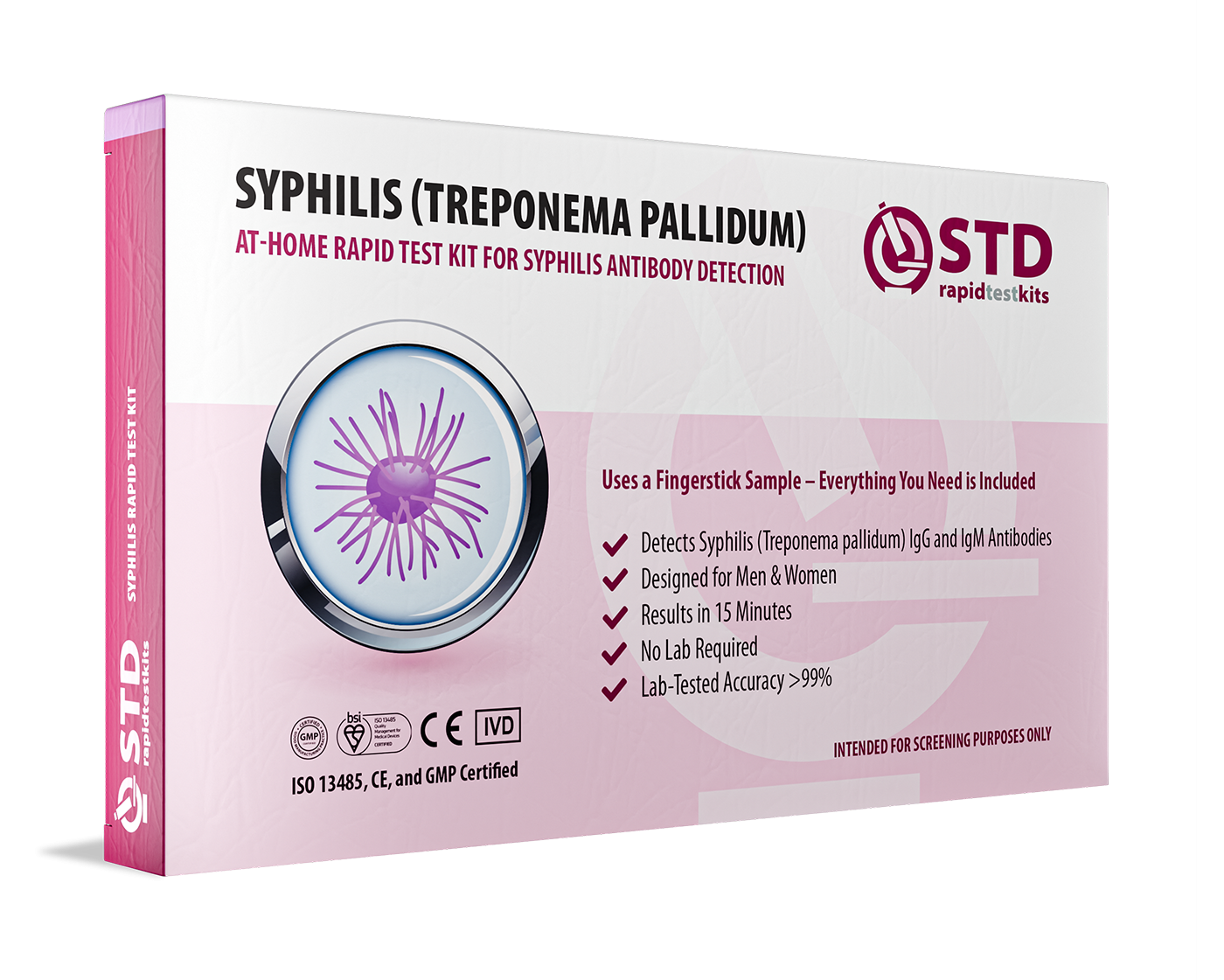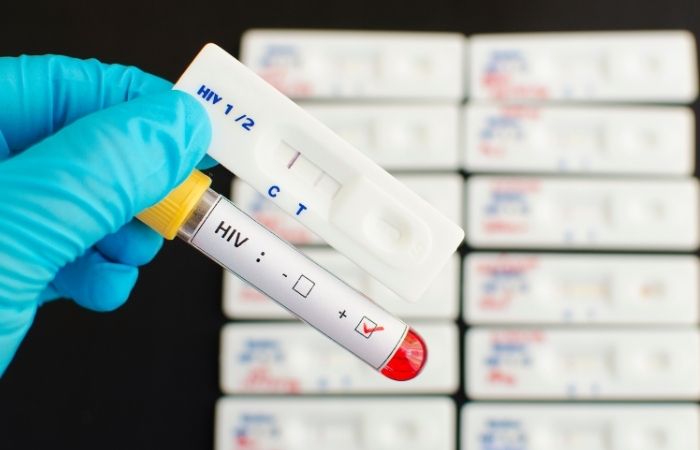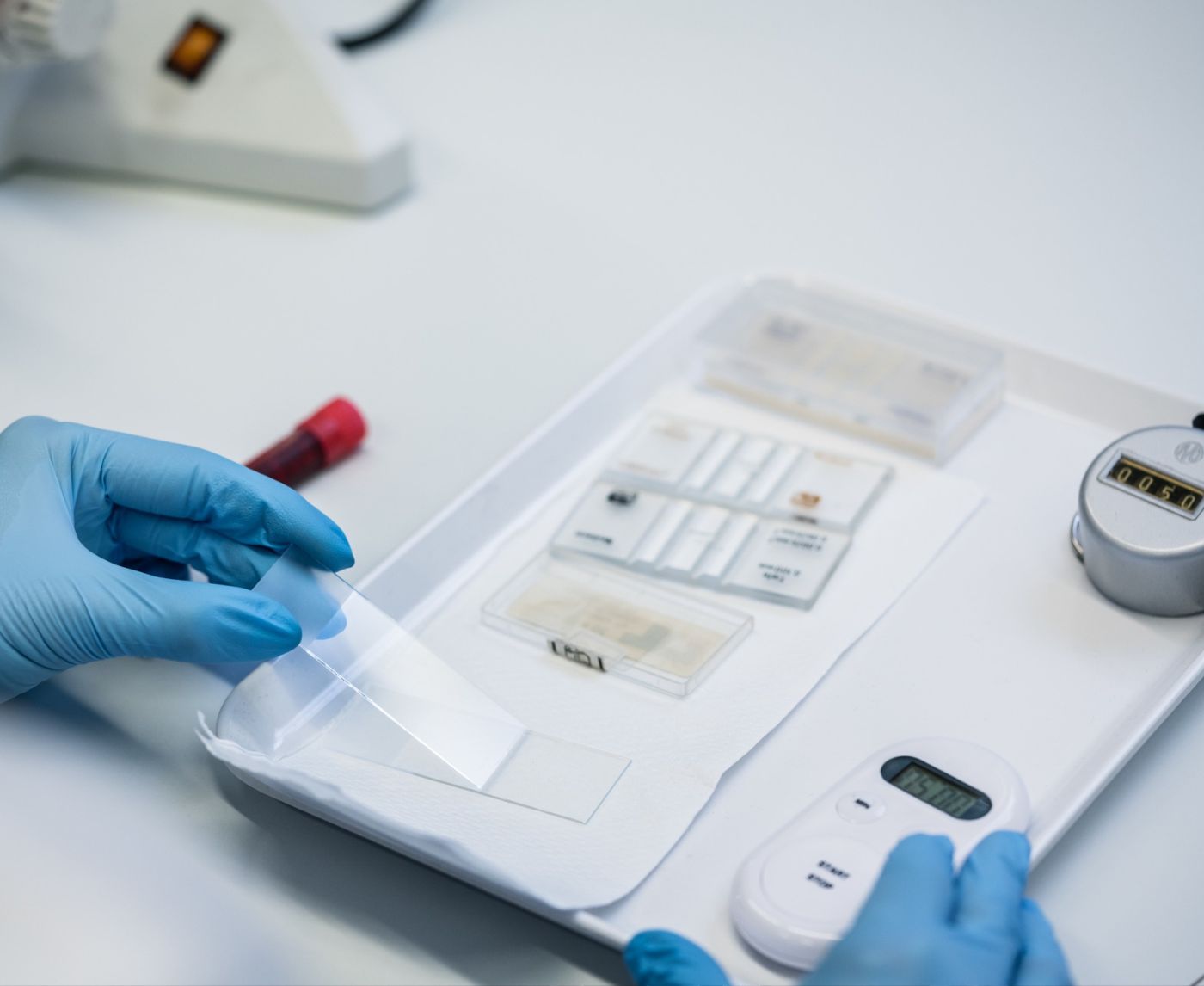Can You Really Get an STD From Anal Sex, Even With a Condom?
What Are STD Window Periods, and Why Do They Matter?
The window period is the time between when you were exposed to an STD and when it will show up accurately on a test. This is not the same as the incubation period, which refers to when symptoms appear. You could have no symptoms at all but still test positive, if you wait long enough.
Think of the window period like a pregnancy test. You don’t take it the day after sex, you wait until your body has built up enough of what the test is trying to detect. STD tests work the same way. Some look for the virus itself (like DNA or RNA), while others look for antibodies your body makes in response.
Testing during the window period can lead to false negatives, which means you might be infected even if the result says you’re not. That’s why timing is everything when it comes to STD testing after sex.

People are also reading: Acute HIV Symptoms: What to Expect in the First 30 Days
Gonorrhea and Chlamydia: The Earliest You Can Test
These two bacterial STDs have the shortest window periods, which means you can usually test for them the soonest, typically around 5 to 7 days after exposure. Nucleic acid amplification tests (NAATs), which most at-home kits and clinics use, are highly accurate at this stage.
If you’re feeling symptoms like burning when you pee, unusual discharge, or pelvic pain, don’t wait. You can test as early as 5 days post-exposure, and many people start showing symptoms within the first week.
But keep in mind: even if your symptoms go away, the infection might not. That’s why it’s crucial to test even if you feel better. And if you want total peace of mind, test again 2 weeks later to catch anything that didn’t show up initially.
Get a chlamydia test kit you can use from home, fast, discreet, and accurate.
HIV: The Most Sensitive Timeline
HIV is where timing gets trickier. Depending on the type of test, you may need to wait anywhere from 10 days to 3 months to get a reliable result. Here’s the breakdown:
- RNA test: Detects the virus itself as early as 10–14 days after exposure. Highly accurate but not always widely available.
- Antigen/Antibody test: Most accurate between 18–45 days post-exposure. This is the most common lab test.
- Antibody-only test: Should be taken 3 months after exposure for conclusive results.
If you think you’ve been exposed, you can take a test at 2 weeks, but retesting at 4 weeks and 12 weeks is the gold standard. And if the exposure was high-risk, ask your provider about PEP (post-exposure prophylaxis), which can reduce your chances of infection if taken within 72 hours.
Syphilis: The Slow Burn Infection
Syphilis is stealthy. It can take up to 3 weeks to show up on a test, sometimes longer. The earliest you can test is about 10–14 days, but you’re most likely to get an accurate result around 3 to 6 weeks after exposure.
The problem? Syphilis can go symptomless for a while, or its early signs, like a painless sore or rash, can be easy to miss. Even if you feel fine, testing is smart if you’ve had unprotected sex with a new or unknown partner.
Blood-based treponemal tests (like RPR or VDRL) are commonly used and available through many at-home test kits. If you’re testing early, be sure to follow up with a second test after 6 weeks for peace of mind.
Check Your STD Status in Minutes
Test at Home with RemediumSyphilis Test Kit

 For Men & Women
For Men & Women Results in Minutes
Results in Minutes No Lab Needed
No Lab Needed Private & Discreet
Private & DiscreetOrder Now $33.99 $49.00
Herpes: One of the Hardest STDs to Time
Herpes is one of the most misunderstood, and misdiagnosed, STDs out there. It can take anywhere from 4 days to 12 weeks after exposure for the virus to show up on a test, depending on the type of test used and whether symptoms are present.
If you’ve had an outbreak (like sores, blisters, or tingling), a swab test of the affected area can confirm herpes within the first few days. But if you’re asymptomatic, you’ll need to wait for a blood test, which looks for antibodies. These antibodies take time to build up, usually 3 to 12 weeks.
Bottom line: don’t rush herpes testing unless you’re symptomatic. If you want the most accurate results, get tested at 12 weeks post-exposure or talk to your doctor about earlier options if symptoms appear.
Order a Genital Herpes 2 Rapid Test Kit to use at home, especially helpful if you’re unsure whether that bump is a pimple or something else.
Hepatitis B and C: Longer Timelines, Bigger Stakes
Hepatitis B and C can also be passed through sex, especially anal or rough sex, or when there’s blood involved. Unlike some bacterial STDs, these viruses take longer to detect and are often missed if you test too soon.
The general window period for accurate hepatitis testing is:
- Hepatitis B: 3 to 6 weeks for HBsAg (surface antigen) tests
- Hepatitis C: 4 to 10 weeks for antibody or RNA-based testing
If you had a high-risk encounter or are unsure of your vaccination status for Hep B, don’t wait. These infections can become chronic and lead to liver damage if left untreated. Hep C is now curable with antivirals, but only if diagnosed early enough.
When Should You Retest After a Negative Result?
This is where things get tricky. If you test too early and get a negative result, you may still be infected. That’s why health professionals often recommend follow-up testing at 3, 6, or even 12 weeks, depending on the STD.
Here’s a general retest guide if you got a negative result but had recent exposure:
- Chlamydia/Gonorrhea: Retest at 2 weeks if high risk or symptomatic
- HIV: Retest at 4 weeks, then again at 12 weeks for final clearance
- Syphilis: Retest at 6 weeks if first test was negative
- Herpes: Retest at 12 weeks if asymptomatic but concerned
If you've had multiple partners, repeated exposures, or an outbreak of symptoms, don't rely on just one test. Serial testing gives you the most reliable results.

People are also reading: Unprotected Sex? Here's When to Get Tested for STDs
Practical Testing Tips to Avoid False Negatives
STD testing isn’t just about when you test, it’s also about how you test. Here’s how to make sure you get the most accurate results:
- Wait until the right window period: Don’t test too early, even if you’re anxious. Follow the specific timelines for each infection.
- Use the right test for the situation: Blood tests, urine tests, and swabs all detect different things. Make sure your kit matches your risk.
- Follow all test instructions carefully: A contaminated or mishandled sample can ruin accuracy. Take your time.
- Retest if anything seems off: If you feel symptoms but tested negative, follow your gut. Timing matters, and your body knows.
For the most comprehensive checkup, consider a bundle. The 10-Most Common STD Test for Women or the 8-Most Common STD Kit for All Genders can cover your bases in one go.
The Emotional Fallout of Testing Too Soon
If you’re Googling this at 2 a.m. after a regrettable night or a condom scare, you’re not alone. The fear, the guilt, the “what ifs”, they hit hard. But here’s the truth: panic-testing the morning after might only add confusion to your fear. You might get a false negative and wrongly assume you're in the clear.
It’s okay to be scared. What matters is turning that fear into a smart plan. Testing at the right time means trusting your body, and science, to give you real answers. Waiting even a few extra days can make the difference between a false reassurance and a life-changing diagnosis.
So breathe. Bookmark this. And set a date in your calendar for when testing will actually count. That’s not procrastination. That’s strategy.
The Risks of Testing Too Early
Testing too soon isn’t just pointless, it can be harmful. A false-negative result might convince you not to use condoms or not tell a new partner you were recently exposed. It could delay diagnosis and let the infection spread without symptoms. In worst-case scenarios, it can create false peace of mind that leads to unknowingly transmitting an infection.
Here’s what early testing can’t do:
- Confirm that you’re truly STD-free after a new encounter
- Give conclusive HIV results within 7 days
- Detect herpes unless there are visible symptoms
If you're unsure, test twice: once after the minimum window, and again after the maximum. Knowledge doesn’t just protect you, it protects everyone you sleep with.
Check Your STD Status in Minutes
Test at Home with Remedium3-in-1 STD Test Kit

 For Men & Women
For Men & Women Results in Minutes
Results in Minutes No Lab Needed
No Lab Needed Private & Discreet
Private & DiscreetOrder Now $69.00 $147.00
For all 3 tests
What to Tell Your Partner (And When)
This part sucks, but it’s necessary. If you’re worried you may have been exposed to an STD and you’ve had sex with someone else since then, it’s your responsibility to let them know. But the timing matters just as much as the honesty.
Here’s a script that balances transparency and mental safety:
“Hey, I recently found out I might have been exposed to an STD. I’ve already planned my test and wanted you to have the info too, just in case. I’ll follow up with results, but I thought you deserved to know.”
Even if it’s awkward. Even if it’s complicated. Giving someone the chance to protect themselves is never a bad thing. And if the roles were reversed, wouldn’t you want the same?
Real Stories: “I Tested Too Early and Regretted It”
Alex, 29: “I hooked up with someone new and panicked the next day. I bought an at-home HIV test and took it 3 days later. Negative. I felt relieved, until I got sick weeks later and tested again. It was positive. The first test was too soon to catch it. That mistake changed my life.”
Michelle, 33: “After a breakup, I went on a dating spree. I got tested two days after sleeping with someone new. All negative. But three weeks later, I started having pelvic pain. Turns out I had chlamydia that the early test missed.”
Jesse, 24: “I waited. It was hard, but I marked 14 days after a risky hookup and used an at-home multi-STD test. I caught gonorrhea early and got treated right away. That test probably saved my partner too.”
Don’t let fear rush your decision. Let it remind you that you care about your health, and take control on your terms.
FAQs
1. How soon after unprotected sex can I test for STDs?
You can test for chlamydia and gonorrhea as early as 5 days. For HIV, herpes, and syphilis, it’s best to wait 2 to 12 weeks for accuracy.
2. Can I test for all STDs at once?
Yes. At-home STD bundles test for multiple infections in one go. They're ideal if you’re unsure what you’ve been exposed to.
3. What happens if I test too early?
You might get a false-negative result. That means you could have an infection but not enough viral load or antibodies for the test to detect it yet.
4. What’s the most accurate time to test for HIV?
At 4 weeks, most lab tests are 95% accurate. At 12 weeks, nearly all tests are conclusive. RNA tests can detect infection earlier, around 10 days.
5. Is it better to wait or test right away?
Test right away if you’re symptomatic. If not, wait until the window period is over for more reliable results. In some cases, retest at both intervals.
6. Do symptoms always show up before a test will be positive?
No. Many STDs show no symptoms at all. You can test positive before ever noticing signs, or never notice them at all.
7. Should I still test if I used a condom?
Yes. Condoms reduce risk but don’t eliminate it. Skin-to-skin STDs like herpes and HPV can still be transmitted.
8. How accurate are at-home STD tests?
Most are over 95% accurate when used at the right time. Use FDA-approved kits from trusted providers for best results.
9. Can I get re-infected with the same STD?
Absolutely. Curing chlamydia or gonorrhea once doesn’t give you lifelong protection. Retesting after treatment is often recommended.
10. What if I test positive?
Don’t panic. Many STDs are curable, and all are manageable. Get treated, notify partners, and follow up to confirm the infection is gone.
Take Control with the Right Test, at the Right Time
If you’ve had a risky encounter, don’t just act on fear, act on facts. Testing at the right time can give you clear answers, peace of mind, and protection for yourself and others. Whether you're checking for a specific infection or covering all bases, at-home testing has never been easier or more reliable.










